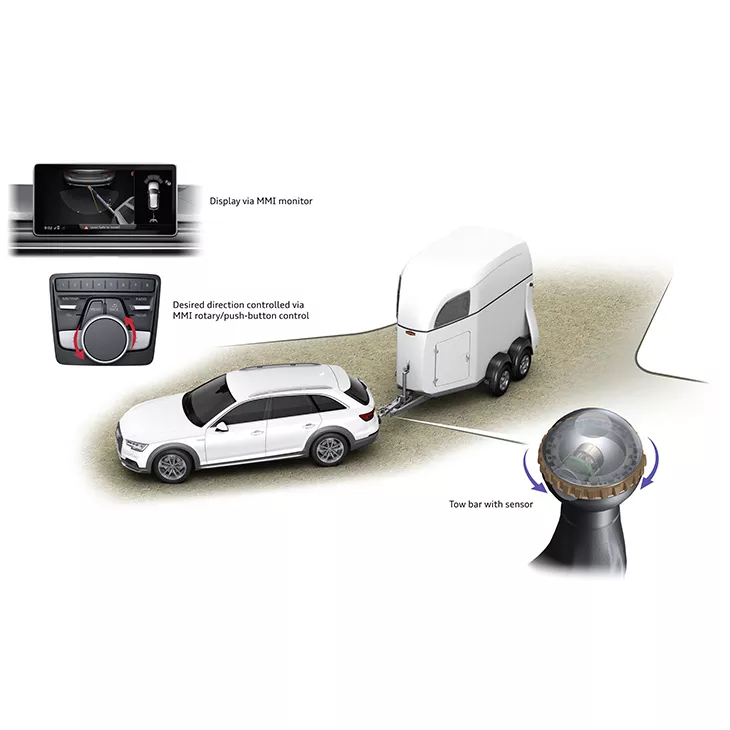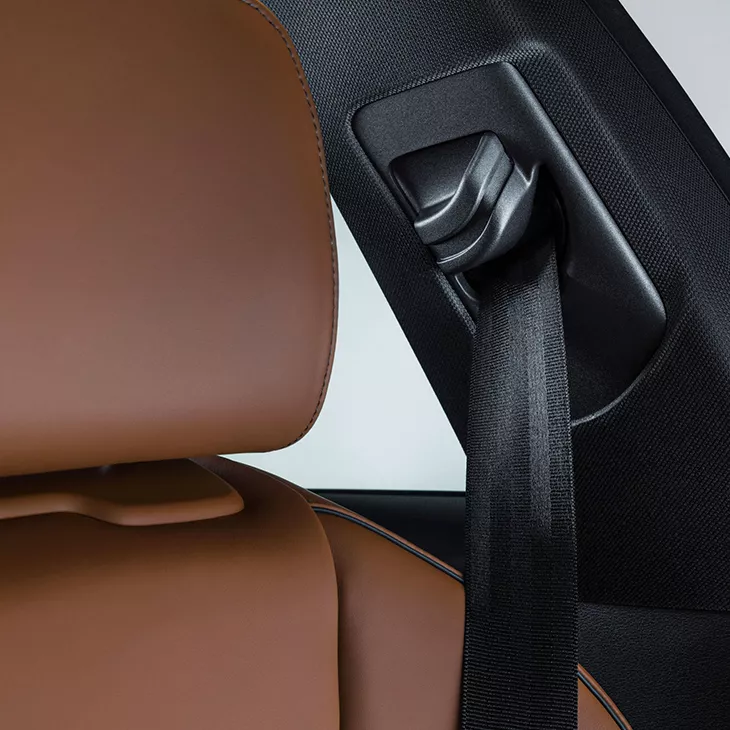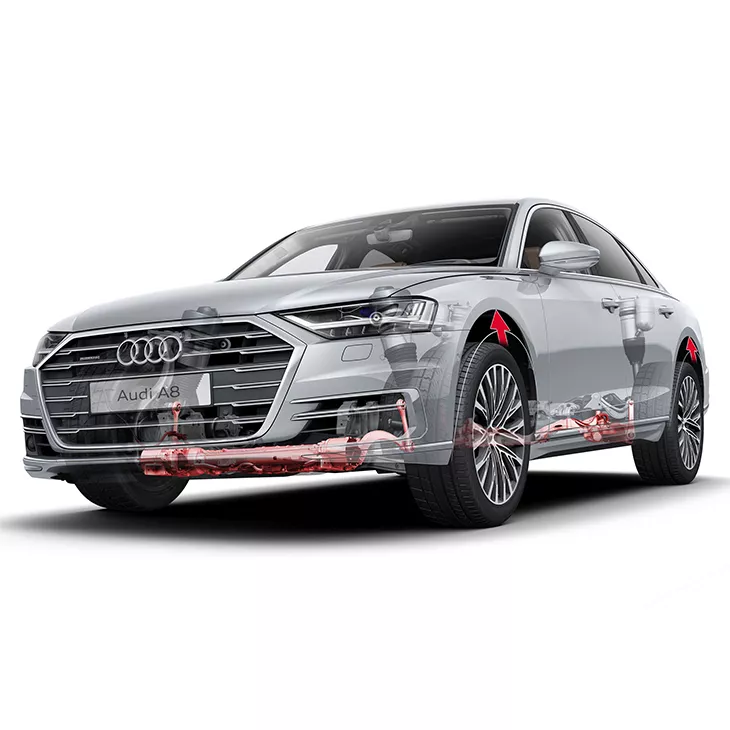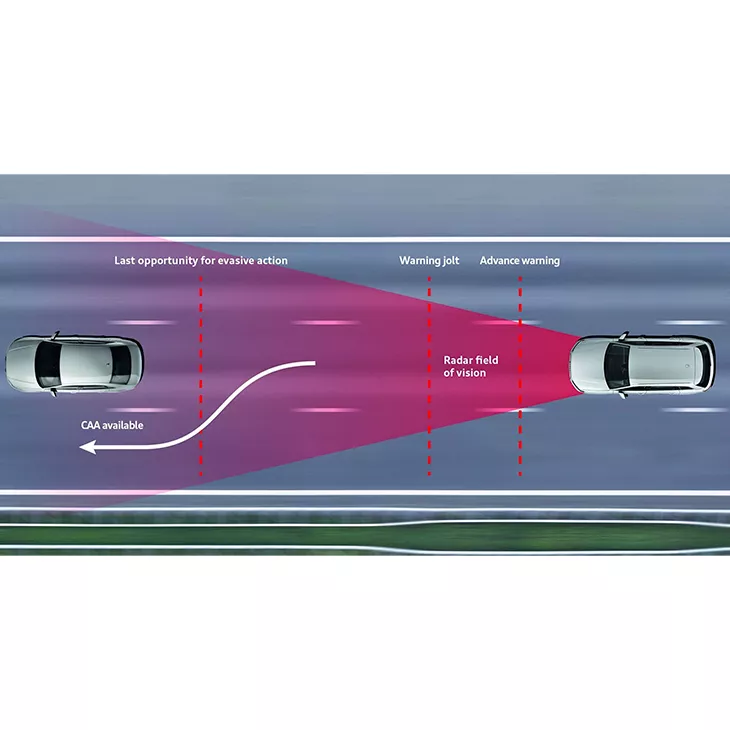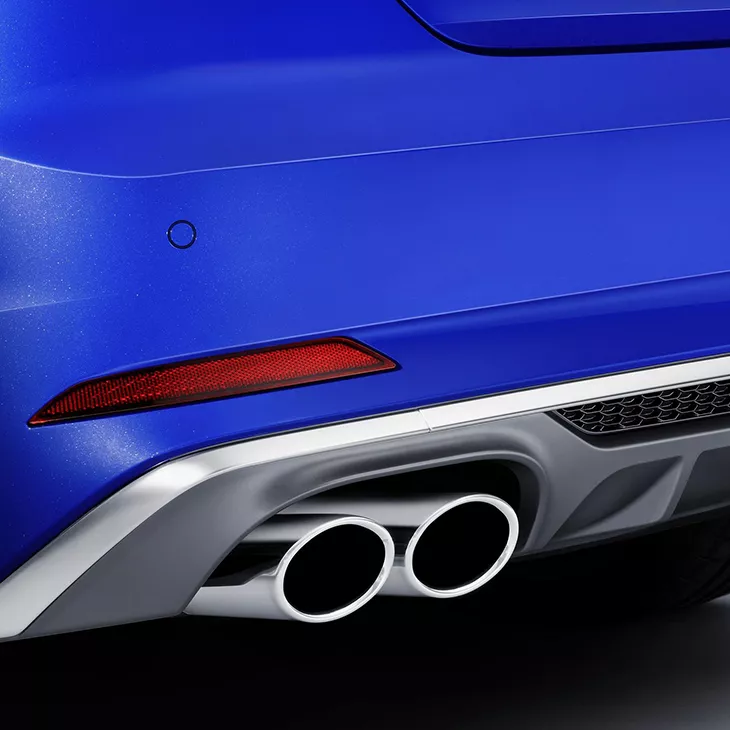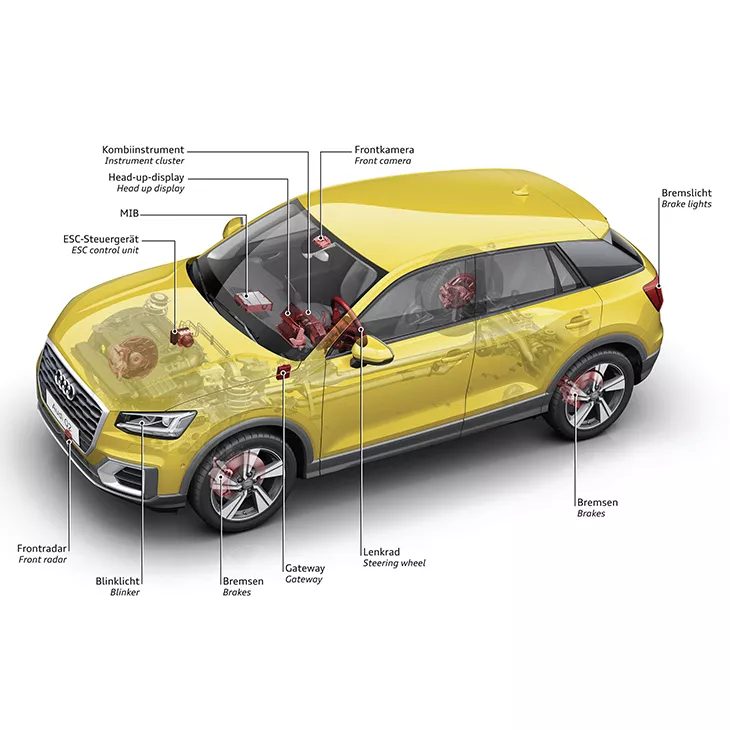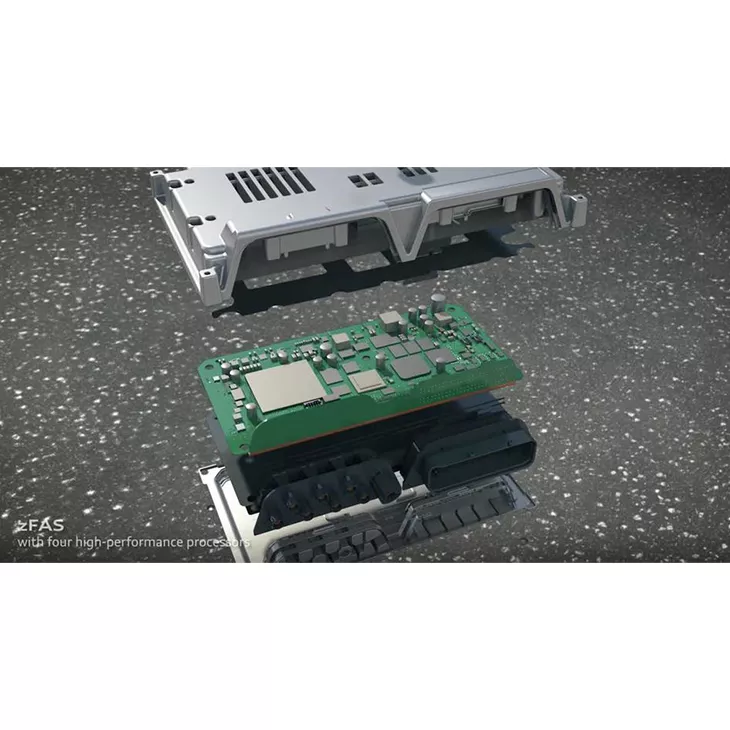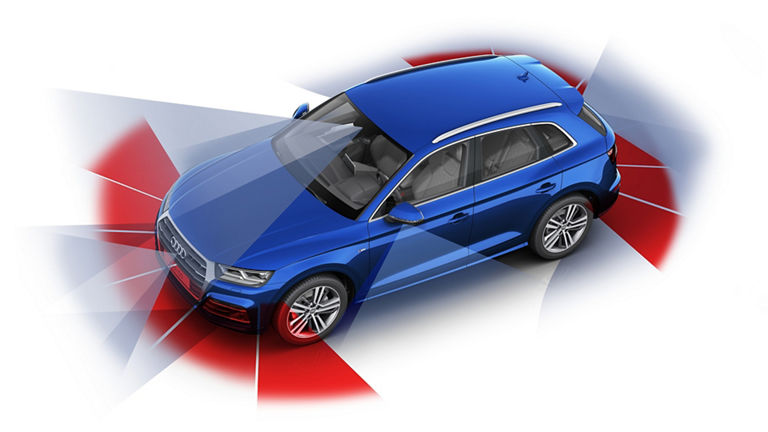
Driver assistance systems
Audi assists drivers with a broad range of assistance systems – from turn and parking assistants to the camera-based road sign recognition. They deliver more safety, convenience and efficiency, and they pave the way for piloted driving.
- Audi Q2: Combined fuel consumption in l/100 km: 6.6 - 4.4; combined CO2 emissions in g/km: 150 - 115
- Audi A8: Combined fuel consumption in l/100 km: 8.3 - 5.6; combined CO2 emissions in g/km: 189 - 148 Information on fuel/power consumption and CO2 emissions in ranges depending on the chosen equipment level of the car.
- Audi A5 Coupé: Combined fuel consumption in l/100 km: 9.1 - 3.9; combined CO2-emissions in g/km: 206 - 102
- Audi Q5: Combined fuel consumption in l/100 km: 7.5 – 4.4; combined CO2 emissions in g/km: 177 – 115 Information on fuel consumption and CO2 emissions as well as efficiency classes in ranges depending on the tires and alloy wheel rims used
- Audi Q2: Combined fuel consumption in l/100 km: 6.6 - 4.4; combined CO2 emissions in g/km: 150 - 115 Information on fuel consumption and CO2 emissions as well as efficiency classes in ranges depending on the tires and alloy wheel rims used
- Audi Q7: Combined fuel consumption l/100 km: 9.1 – 6.6; combined CO2 emissions in g/km: 208 – 174 Information on fuel consumption and CO2 emissions as well as efficiency classes in ranges depending on the tires and alloy wheel rims used
- Audi A5 Sportback: Combined fuel consumption in l/100 km: 9.1 - 3.9; combined CO2-emissions in g/km: 207 - 103
- Audi A3: Combined fuel consumption in l/100 km: 8.5 – 3.8; combined CO2 emissions in g/km: 194 – 101 Information on fuel consumption and CO2 emissions as well as efficiency classes in ranges depending on the tires and alloy wheel rims used.
- Audi RS 5 Cabriolet: Combined fuel consumption in l/100 km: 10,7; combined CO2-emissions in g/km: 249;
- Audi A3 Cabriolet: Combined fuel consumption in l/100 km: 7.3 - 5.2; combined CO2 emissions in g/km: 165 - 119
- Audi A4: Combined fuel consumption in l/100 km: 6.8 – 3.8; combined CO2 emissions in g/km: 164 – 100
- Information on fuel/power consumption and CO2 emissions in ranges depending on the chosen equipment level of the car.




